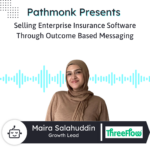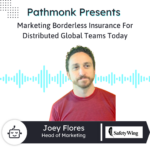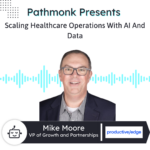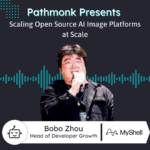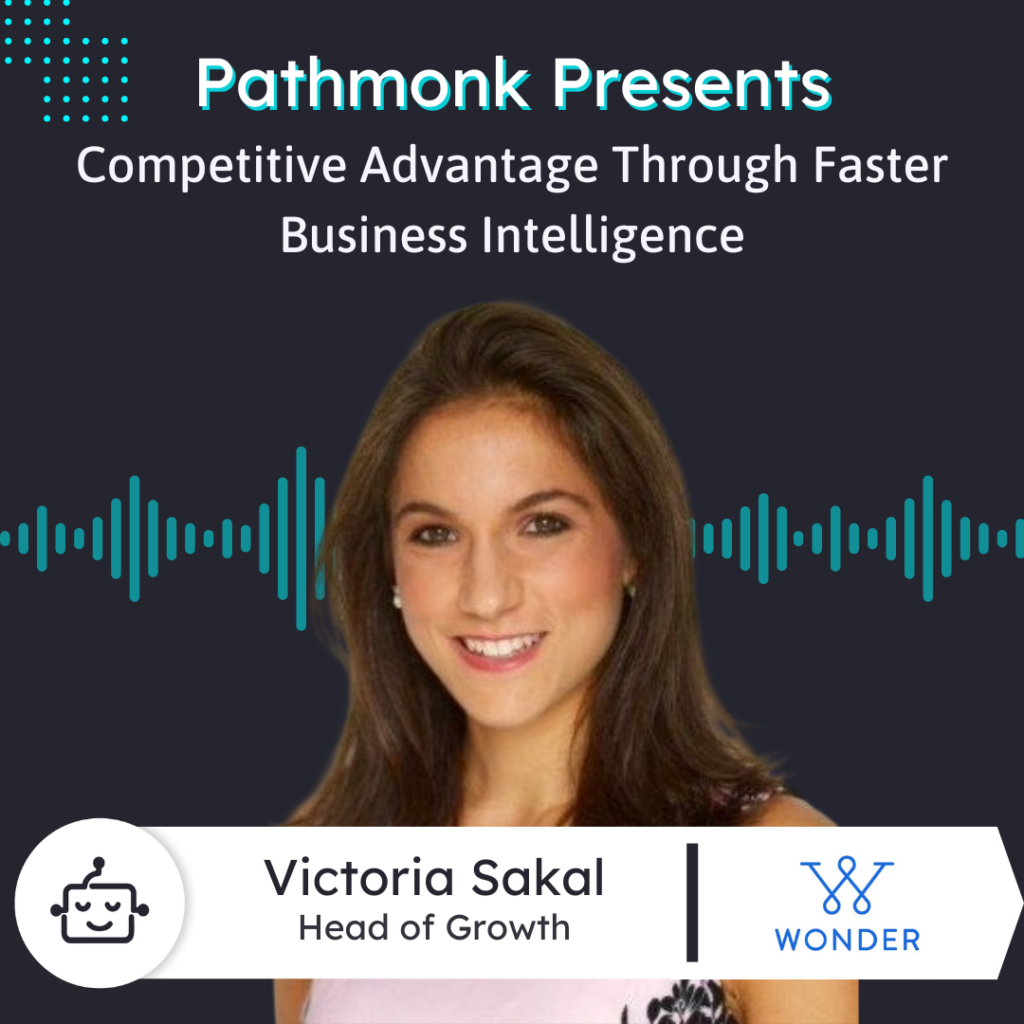
Introduction
Victoria Sakal, from Wonder, joins us on today’s episode of Pathmonk Presents to discuss how Wonder is transforming the way businesses answer their professional questions.
Wonder leverages the power of AI and human expertise to provide users with faster, more accurate insights than traditional desk research methods. Victoria dives into the different stages of the innovation pipeline that Wonder can be applied to, from strategy development to market launch.
She also explains how Wonder’s unique approach can help businesses gain a competitive edge by providing them with the information they need to make better decisions, faster.
More Sales From Your Website With AI
Personalized interactions based on your users' behaviour to get +50% more conversions.
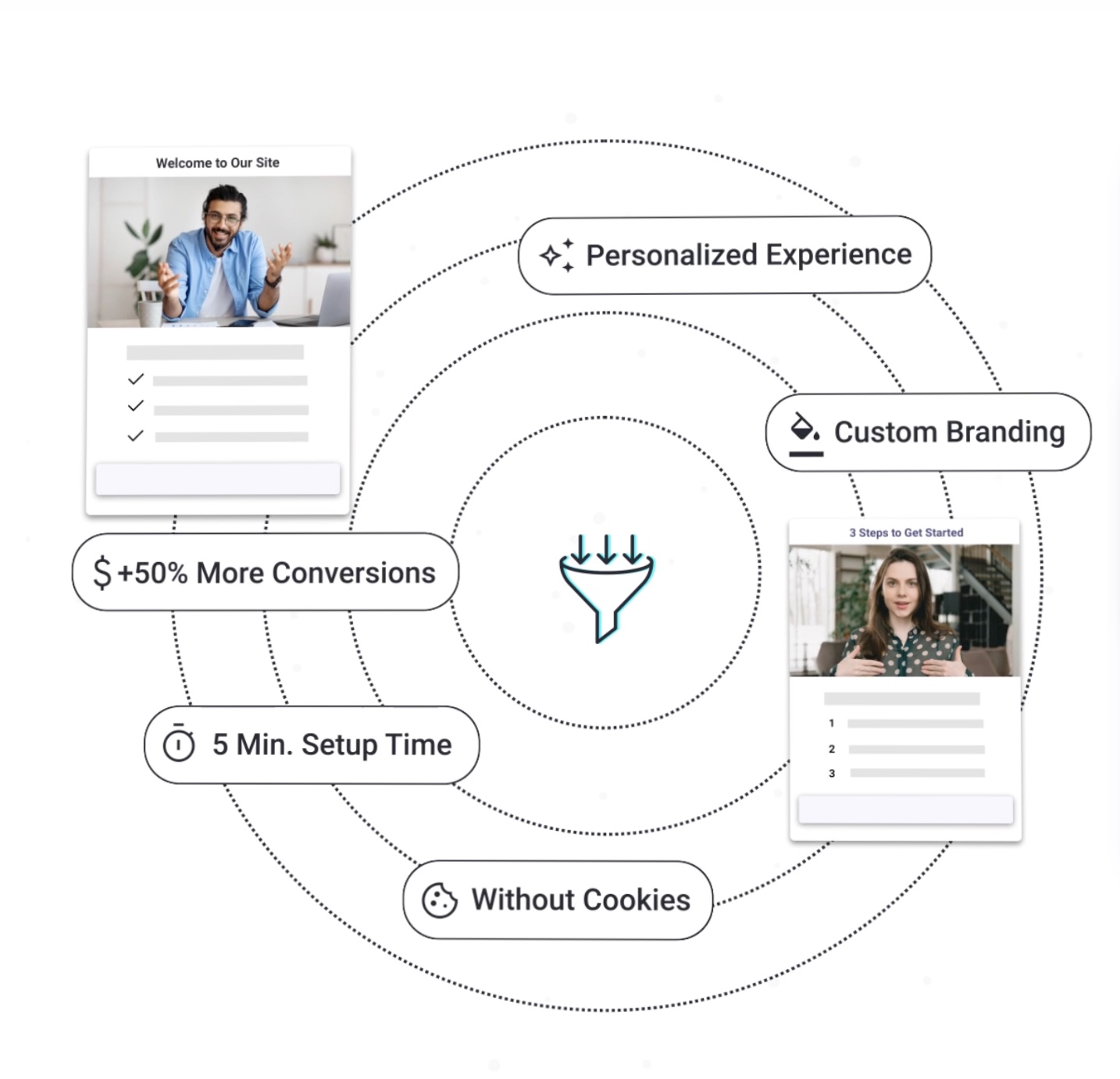
Pablo Márquez: Pathmonk is the intelligent tool for website lead generation. With increasing online competition, you probably know that over 98 percent of website visitors don’t convert their leads. The ability to successfully show your value proposition and support visitors in their buying journey is what separates you from the competition online.
The way that Pathmonk can help in this regard is by qualifying and converting those leads on your website. By figuring out where they are in the buying journey and influencing them in key decision moments with relevant micro experiences like case studies, videos, and much more. Stay relevant to your visitors and increase conversions by more than 50%.
How? By adding Pathmonk to your website in seconds, letting the artificial intelligence do all the work, getting access to more than 50 percent qualified leads while you keep doing marketing and sales. Check us out on pathmonk.com. Welcome to today’s episode of Pathmonk Presents. Let’s talk about today’s guest.
We have Victoria with us today, joining us from Wonder. Victoria, it’s good to have you on today’s show. I hope I made sure that I pronounced everything right. Is that correct?
Victoria Sakal: Yeah, absolutely. Great to be here. Thanks for having me.
Pablo: Excellent. So, as a brief introduction, tell us, in your own words, what Wonder is all about.
Victoria: Absolutely. So, I’ll start with a little bit of context because I feel like it might resonate with a lot of listeners here. We live in a world where there’s a lot of information, and whether we’re professionally curious just to stay on top of our game or we need answers to different questions to inform our strategies, there are a lot of ways we can get those answers. There’s primary research, there’s behavioral data, and there’s also a lot of secondary desk research out there. Historically, that meant we, and as an ex-consultant, I feel this pain acutely, spent a lot of time Googling, trying to find the right size of this or trend around that or deep dive around perspectives on whatever it might be.
Lately, there are GPT and other LLMs that we can turn to for attempts at answers to those questions. But both Google and LLMs have their flaws. With Google, you’re going to end up on either page 15, hoping you’re finding something relevant, or probably sinking a few hours into cross-referencing and pulling together your reports. With LLMs, they have their own basket of problems, like hallucinations, knowing how to ask the right question, fighting with the thing to tell you what you really want to know, but it doesn’t really know. And, you know, hoping that the answers you’re getting back are accurate but having to verify them.
Wonder aims to help innovators, people who are building businesses, and those answering professional questions get answers faster. The crux of it is using the horsepower of AI. We have multi-LLM prompt engineering components that will take your question and help clarify it for you. Then we pair that with humans who are expertly trained researchers. They know your category, the ins and outs of research, and the intricacies of plugins and prompt engineering. So you’re getting your insights faster and more accurately with the credibility of humans but the speed and breadth that AI bring to the combination. We’re answering professional business questions around desk research at its core, but it’s been pretty exciting to see the space evolve, and Wonder uniquely solves this problem. So it’s been a great ride so far.
Pablo: Excellent. So that everyone listening can get a good understanding of your company, I want to ask you a few more questions related to this. You mentioned that you use AI to help get fast answers for different clients, but what specific problems do you address? What specific issues or obstacles?
Victoria: Yeah, it’s a great question. We think about it as professional or business questions as opposed to, “Which is the best Thai restaurant in my area?” It’s more like, “Who are the main competitors or players in XYZ space?” or “How are you expressing sentiment towards XYZ legislation that tech companies will worry about?”
When you take it a step back, we work across what we refer to as the innovation pipeline. From the original strategy of how we are going to win, to exploring what ideas and opportunity spaces to co-evaluate, to developing and prototyping, seeing what makes sense to go to market, how to launch it, what’s the business model, and how to think about pricing. All of these stages require insights and answers. Some of these you might lean more into primary, but we serve our clients across any given category and geography across that full spectrum. It’s questions around your audience, market, competitive dynamics, or trends that you’re looking for either quick, early insight or really rich, deep dives and thorough accounts on.
Pablo: I see. And who are your clients? Are there any industries or focus areas or sectors that are more prominent in your client base?
Victoria: Yeah, we work with the majority of the Fortune 500, which tends to be really happy with our work. We work with world-leading consultancies without mentioning any by name and some investment firms looking to due diligence opportunities. Ultimately, it comes down to strategy, innovation, or future-forward teams or people planning the best decision against a given target or objective. We tend to exist especially in Fortune 500 and Fortune 5,000, but we are industry-agnostic for the most part. We work across all industries, and as I mentioned, geography is not a limitation. Of course, there is a certain level of depth around legal or health or pharmaceutical granularity, but anything that’s publicly available, Wonder is pulling from, and our researchers have expertise in it. So it spans the gamut.
Pablo: What is your top client acquisition channel? How do you reach and attain these clients all across the board?
Victoria: Historically, it’s been outbound. We have really nailed that effort down and gotten it pretty strong from an approach and a messaging perspective. My role is actually building out the inbound, so hopefully, if we talk in a year, I have a different answer, but right now and historically, it’s been outbound.
Pablo: So, if it’s outbound, what is the role of the website in client acquisition at the moment, if any?
Victoria: I’ll actually speak to what will be live in about two weeks from this conversation when our new website is live. Historically, the website aimed to provide a high-level overview of what we do. There was pricing information at one point, but moving forward, we’re thinking more specifically about the role it will play. The idea is that with more create demand efforts, as people discover us and go to the website to get questions answered, they get really quick clarity around who we are, who we’re for, or maybe more importantly, who we’re not for, so they can see themselves in the pain points and solutions described or not. We provide flexibility around the types of companies we work with and real tangibility around how our product works, how simple the process is, what inputs are needed, which are literally just coming to us with an early question, and we’ll help you get to a better question and get you the answers, and then use cases. We have lots of examples of the types of questions we ask for clients. The idea is to bridge people from early interest to wanting to talk to someone because something on the site piqued their interest or resonated with a pain point.
Pablo: I see. So, to have a basic understanding, if you have to describe the strengths versus the weaknesses of the website, would you say that the website is more user experience-driven on the strong side but not yet so much focused on converting leads’ quality?
Victoria: Historically, that’s right. Moving forward, the idea is to improve both. With our inbound flow, it’s just a couple of quick questions to book a calendar right off our website. The idea is that there are a couple of additional questions that will help people get a sense if they’re a good fit. The website should play a better role in helping high-intent and great-fit audience members engage with us.
Pablo: Excellent. To switch gears a little bit, I wanted to ask you about you as a leader. What are the key tasks that you focus on in your day-to-day work?
Victoria: That’s right. To recap, the growth remit means ultimately driving revenue for the business, but with an eye toward the very top of the funnel—building brand awareness, problem awareness, category and solution awareness, and then having Wonder show up and be top of mind as a top choice as a solution. Tactically, that translates to everything from product marketing components, who we are, what’s the story we tell, the language we use that shows up on different channels, including the website, email communications, and our social presence. We also have a bi-weekly event series that we host virtually but live. It’s a balance of product marketing, the channels and execution, and the feedback loop that connects the two in terms of what data we’re seeing, what lessons we’re learning, and what we’re hearing from customers or prospects that we need to weave into our messaging or content.
Pablo: Now I want to ask you a few quick questions to approach the end of the interview. What is the last book you read?
Victoria: I’ll say the first thing I picked up when I was starting this new role was “When Coffee and Kale Compete.” Always a good read, full of sticky notes and highlighters. I also recently read “Shoe Dog,” the Nike book, on vacation. While many people loved it and recommended it, it didn’t resonate as much with me. It was peripherally business-related, but I didn’t find it as valuable.
Pablo: Interesting. I’m looking for new things to add to my library, so I’ll take note of that. What’s the one single thing your company is focused on at the moment?
Victoria: Internally, we’re focused on optimizing the experience for our users. We just launched a new version of our product and have had great feedback and usage among our existing customer base. The next step is getting that super watertight, as optimized and positive as possible, and then conducting trials to help the general population become aware of it. It’s as much about bolstering the product as getting it out there.
Pablo: If there was one repetitive task you could automate, what would it be?
Victoria: The post-event processes for our live events, like automating sharp clips and adding post-production content, are still clunky. Even AI or automated tools aren’t totally reliable yet, so it requires time to manage and do. Another piece is connecting data across different parts of the organization and systems. It’s so important but not easy.
Pablo: If technology wasn’t an issue, what would be the thing you would fix in your role as a marketer today?
Victoria: The data connectivity piece. The simplicity involved in collecting data and insights from different corners and motions of the organization into a place, organizing and connecting them, and making it easy for the organization to access or query. It requires a lot of technology, but breaking down those boundaries would transform many companies.
Pablo: What is one piece of advice you would give yourself if you were to start your journey as a marketer today?
Victoria: Experiment more and get your hands dirty with different tools and platforms. The muscle of figuring things out goes a long way. Also, stop the emphasis on the tactical as you grow in your career and focus more on strategic, big-picture activities with higher leverage. And always maintain customer obsession, as connecting customer needs with your solutions is at the core of every successful business.
Pablo: Excellent answer. Thanks a lot for being on the show with us today. I want to give you the last word. If someone forgets everything about the interview today, what is the one thing they should remember about your company?
Victoria: Our businesses are only as good as the decisions we make, which are only as good as the information we have. Ask more questions, ask better questions, and make sure you’re getting better answers quicker and faster. Your innovation velocity and impact will only increase. We’re here to help you do that, brainstorm with you, and provide our clarification engine and amazing researchers to get you better information for better decisions.
Pablo: Thanks for your time today, Victoria.
Victoria: Thank you. Great to be here.




